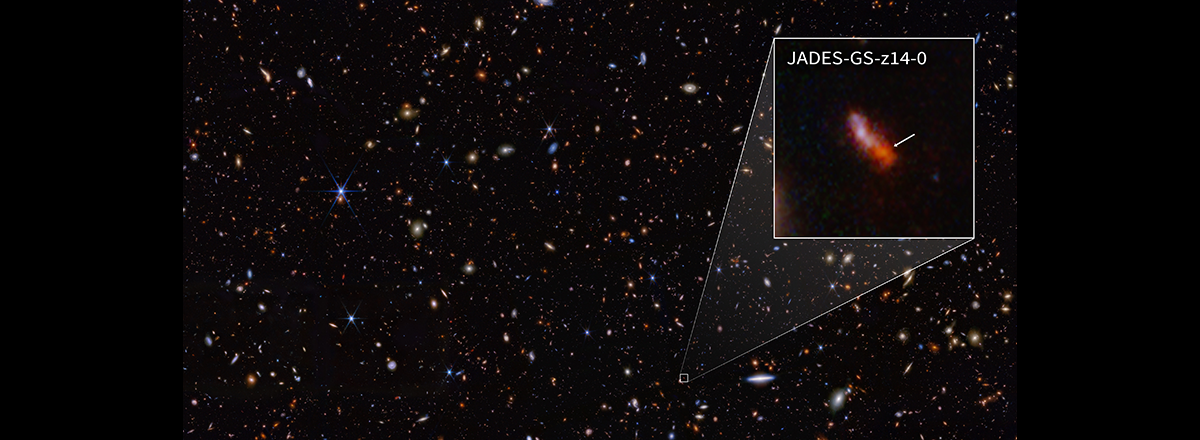James Webb Space Telescope Unveils the Farthest Galaxy Ever Discovered
These findings are crucial as they indicate that significant galaxy formation was occurring much earlier than previously thought, challenging existing models of cosmic evolution.

NASA's James Webb Space Telescope (JWST) has confirmed the discovery of the most distant galaxy known to science. The galaxy, named JADES-GS-z14-0, was observed as it existed just 300 million years after the Big Bang, setting a new record for the most remote celestial object ever seen.
The discovery was made as part of the JWST Advanced Deep Extragalactic Survey (JADES), which aims to explore the formation and evolution of the earliest galaxies. Alongside JADES-GS-z14-0, another galaxy, JADES-GS-z14-1, was identified, making it the second most distant galaxy to be observed.
These findings are crucial as they indicate that significant galaxy formation was occurring much earlier than previously thought, challenging existing models of cosmic evolution. The JWST's infrared technology allows it to capture light from the first galaxies that has been stretched into the infrared spectrum by the expanding universe. This method provides a unique glimpse into the past, showing these ancient galaxies as they existed billions of years ago.
Astronomers are particularly excited about the characteristics of JADES-GS-z14-0, which shows that it was not only forming stars at a breathtaking rate but also had a much larger mass and brightness than expected for its age. This suggests that the processes leading to galaxy growth were in place very early in the history of the universe.

